hankyoreh
Links to other country sites 다른 나라 사이트 링크
[Seoul travels] Seochon’s small-scale indie bookstores leave big impact
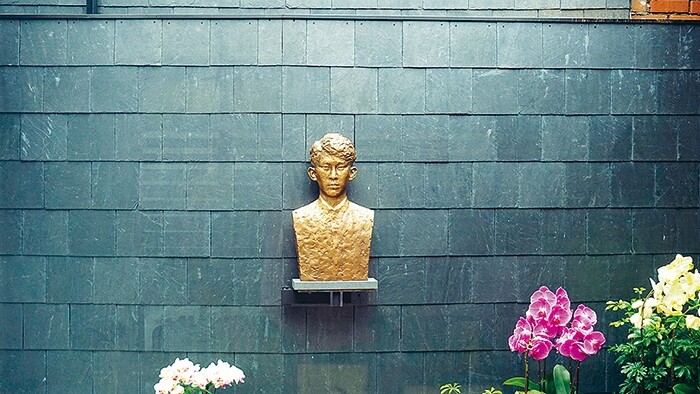
Traditionally, the Seoul neighborhood of Seochon has been closely connected to people committed to self-expression and creativity, including writers, artists, musicians, stage performers, visual artists and cartoonists.
Consider these lines from “Old Seoul,” co-authored by Choi Jong-hyeon and Kim Chang-hee: “They all lived here, from the nobility versed in writing during the Joseon era to the commoner poets, from contemporary calligraphers such as Kim Jeong-hui to great painters like Jeong Seon. It’s hard to say whether Seochon made people like that or whether people like that heeded its call.”
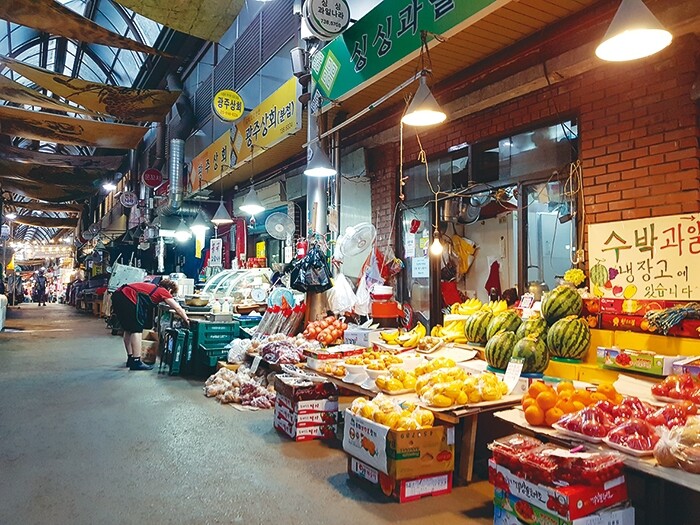
The poet Yun Dong-ju lived on a side street in the Tongin neighborhood as a senior at Yonhi College. Lee Kwae-dae, a painter during the Japanese occupation, and No Cheon-myeong, who is famed for his poem “Deer,” were also Seochon residents.
No discussion of Seochon is complete without mentioning the legendary story of the genius poet Yi Sang and the painter Gu Bon-woong.
Their friendship started at Sinmyeong School. Located where Baehwa Girls’ High School now stands next to Sajik Park, it was a four-year primary school at the time. Gu was four years older than Yi, but he started school late due to a childhood accident that injured his spine and left him with a hunched back.
While the other students made fun of him, Yi became a close friend. That may have had something to do with Yi’s own secret scars.
Though Yi was born in the Sajik neighborhood, he was adopted by a wealthy uncle on his father’s side at the age of three and spent most of his life with his adopted family. That’s why today’s House of Yi Sang is located where his adopted father’s house once stood. The building is in the alley next to the Hyoja branch of Woori Bank on Jahamun-ro (the street that runs from Gyeongbokgung Station on the Seoul subway to Jahamun Tunnel).
Yi and Gu were both highly self-aware, and both heavily scarred, though for different reasons. They had an unusually strong friendship until Yi’s untimely death at the age of 28.
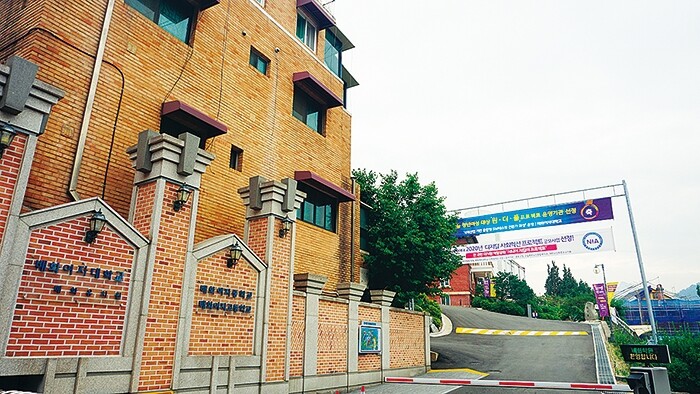
The man known today as Yi Sang was born as Kim Hae-gyeong. The inspiration for the pen name “Yi Sang” came from Gu, who had received a painting case from an uncle as a high school graduation present. Gu gave his dearly cherished painting case — which back then was called a “sasaengsang,” literally meaning “sketch case” — to his young friend Kim Hae-gyeong. Kim was so touched by the gift that he promised to use the character “sang” (meaning “case”) in his pen name, eventually settling on “Yi Sang.” This represented the artist’s commitment to expressing himself in a hurtful world.
While Yi is famous for his short novel “The Wings” and the series of poems called “Crow’s Eye,” he was originally an architect. After graduating with honors from the architecture department at Gyeongseong Technical High School, forerunner of the architecture department at Seoul National University, he worked as an architect under the governor-general of Korea. His talent for self-expression was evident in a wide range of areas — not just literature and architecture, but also painting. Yi’s self-portrait appeared in a Korean art exhibition from the time.
Despite his physical deformity, Gu Bon-woong chose Yi as his model for his painting “Portrait of a Friend.” Gu’s distinctive style of painting — evident in works such as “Portrait of a Woman,” which is included in the collection of the National Museum of Modern and Contemporary Art — has elicited comparisons to French artist Henri de Toulouse-Lautrec.
The capstone of Yi Sang’s fantastical life was his marriage to Byeon Dong-nim, Gu’s young aunt. But perhaps fate was jealous of the talent of the two prodigies. Lee died in Tokyo at the age of 28, while Gu died in Seochon at the age of 48. The two men’s friendship remained unshaken until their death.
Yi and Gu’s period of artistic activity in Seochon was in the 1920s and 1930s, during Japan’s colonial occupation of Korea. It was a period in which geniuses felt stifled — or in Yi’s language, “stuffed,” as if by a taxidermist.
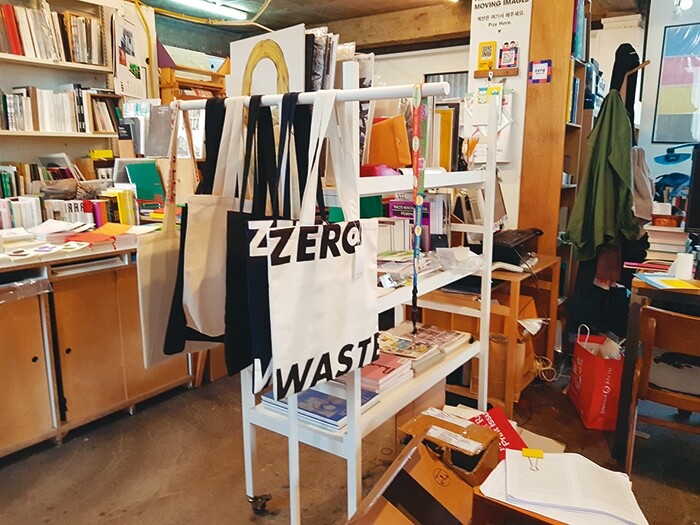
Although many years have passed, Seochon is still inhabited by many practitioners of self-expression. But what do they find so charming about the neighborhood?
In addition to being a writer, designer and artist, Kim Su-jin runs an independent bookstore called “Off to Alone” in a side alley near Tongin Market. Kim spent nine years in the US and two years in the UK before settling down in Seochon.
“About five years ago, I attended an exhibition here, and I just loved the neighborhood. The narrow alleyways were beautiful, the tiny restaurants and cafes had character, and I also liked the creative atmosphere. So I just up and moved here.”
Kim’s bookstore focuses on illustrations and zines. Compared to regular magazines, zines are shorter in length, more personal in subject and more limited in distribution. After getting some recommendations from Kim, I decide to put on my mask and drop by a few other independent bookstores in the neighborhood.
The first is nearby: Of One Book, on a street called Jahamun-ro 9-gil. This independent bookstore only puts one book on sale each month. It’s located in a hotel called Stayfolio and indeed doubles as the front desk, with its staff handing out keys to lodgers. I’m struck by the motto on the business card, which seems tailored for a bookstore that helps people check in to their rooms: “Open the door, open the book.”
From here, I hop over Jahamun-ro, Seochon’s main thoroughfare, to the side street known as Jahamun-ro 10-gil. In the middle of this alley, on the second floor of a building next to a history book store, is The Book Society. As one of Korea’s first independent bookstores, The Book Society is familiar to people working at art museums and in the exhibition industry.
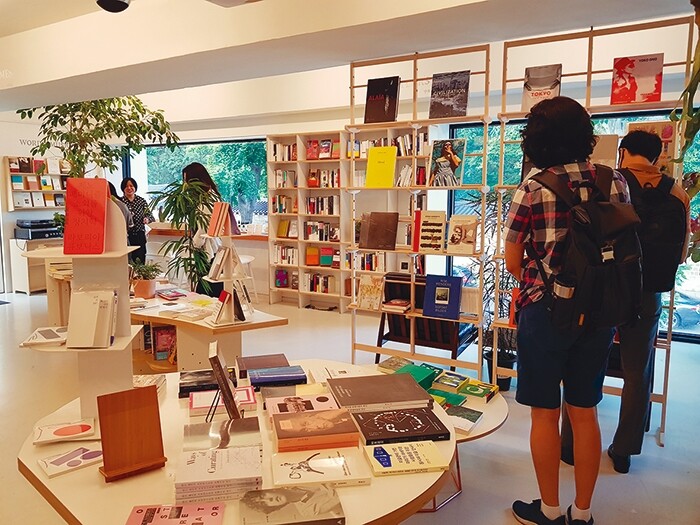
From here, I could head back to the main road, but the true charm of this area lies in wandering through the labyrinthine alleys in Seochon’s neighborhood of hanok (traditional houses). These alleys offer a glimpse into another side of Seoul, including the cozy ateliers tucked away here.
I emerge from one of those alleys onto Hyoja-ro 7-gil Street, to find Irasun, a bookstore specializing in books of photography. Lighting fixtures by Louis Poulsen and music playing on a turntable please the senses. Kim Jin-yeong, the owner of the bookstore, stresses that he personally visits exhibitions in Paris and New York to pick out the photography books on display.
“Given all the art museums around here, most of our visitors are people who enjoy a quiet atmosphere. I pay a lot of attention to the background music, selecting songs without lyrics so that people can concentrate on the books,” Kim tells me.
About a minute away is a cultural venue called Boan 1942, with Boan Books on the second floor. There’s a gorgeous view of Gyeongbok Palace from the window, but even more striking is Yeondu (meaning “light green”) — a Scottish sheepdog who lives at the bookstore.
Since the independent bookstores of Seochon aren’t very far from Kyobo Book Center, the large bookstore at Gwanghwamun, they need some distinguishing factor if they’re to survive. Topic, style, mood, decorations or coffee — something has to set them apart.
The same is true for those whose lives are dedicated to self-expression. They need to find a unique angle or approach, a style or manner of their own. That’s even more the case in today’s world, when we all aim to express ourselves, erasing the boundaries between jobs and hobbies.
Charting one’s own course in life is much harder than one might think, but perhaps that only adds to its value.
By Son Kwan-seung, travel writer
Edited by Seoul&
Please direct comments or questions to [english@hani.co.kr]
Editorial・opinion
![[Column] Samsung’s ‘lost decade’ and Lee Jae-yong’s mismatched chopsticks [Column] Samsung’s ‘lost decade’ and Lee Jae-yong’s mismatched chopsticks](https://flexible.img.hani.co.kr/flexible/normal/500/300/imgdb/original/2024/0512/3017154788490114.jpg) [Column] Samsung’s ‘lost decade’ and Lee Jae-yong’s mismatched chopsticks
[Column] Samsung’s ‘lost decade’ and Lee Jae-yong’s mismatched chopsticks![[Correspondent’s column] The real reason the US is worried about Chinese ‘overcapacity’ [Correspondent’s column] The real reason the US is worried about Chinese ‘overcapacity’](https://flexible.img.hani.co.kr/flexible/normal/500/300/imgdb/original/2024/0510/5217153290112576.jpg) [Correspondent’s column] The real reason the US is worried about Chinese ‘overcapacity’
[Correspondent’s column] The real reason the US is worried about Chinese ‘overcapacity’- [Editorial] Yoon’s gesture at communication only highlights his reluctance to change
- [Editorial] Perilous stakes of Trump’s rhetoric around US troop pullout from Korea
- [Guest essay] Preventing Korean Peninsula from becoming front line of new cold war
- [Column] The state is back — but is it in business?
- [Column] Life on our Trisolaris
- [Editorial] Penalties for airing allegations against Korea’s first lady endanger free press
- [Editorial] Yoon must halt procurement of SM-3 interceptor missiles
- [Guest essay] Maybe Korea’s rapid population decline is an opportunity, not a crisis
Most viewed articles
- 1[Correspondent’s column] The real reason the US is worried about Chinese ‘overcapacity’
- 2[Book review] Who said Asians can’t make some good trouble?
- 3[Column] Samsung’s ‘lost decade’ and Lee Jae-yong’s mismatched chopsticks
- 4Behind bellicose bluster, N. Korea is turning airfields into greenhouse farms
- 5Seoul’s plan to adopt SM-3 missiles is like wanting a sledgehammer to catch a fly
- 6[Editorial] Human trafficking in S. Korea
- 7Report documents instances of lonely deaths in South Korean society
- 8[Column] “Hoesik” as ritual of hierarchical obedience
- 9[Editorial] Penalties for airing allegations against Korea’s first lady endanger free press
- 10Yoon’s broken-compass diplomacy is steering Korea into serving US, Japanese interests